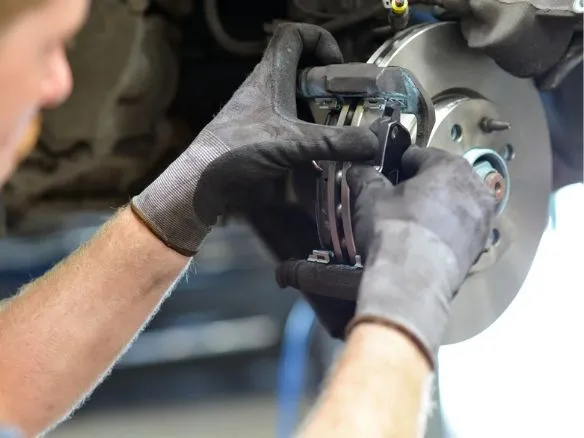
Brakes are an indispensable component of any vehicle. They play a crucial role in ensuring the safety of the passengers, other road users, and the vehicle itself. Modern vehicles use a combination of rear drum and disc brakes to achieve efficient braking. As an automotive service, understanding the nuances of these systems can significantly enhance the quality of service provided. Let’s delve into the intricacies of your car’s rear drum and disc brakes system.
The Basics of Braking Systems
At its core, a braking system’s primary function is to slow down or stop the vehicle by converting its kinetic energy into heat energy. This is achieved through friction, generated when the brake pads or shoes press against a rotating surface, either a brake disc or a brake drum.
1. Rear Drum Brakes
How They Work: Drum brakes, named after the drum-like shape, have been in use for decades. They consist of a brake drum and brake shoes. When you press the brake pedal, hydraulic pressure pushes the brake shoes against the inner surface of the brake drum. This contact generates friction, slowing down or stopping the wheel.
Components:
- Brake Drum: A cylindrical component that rotates with the wheel.
- Brake Shoes: Curved pieces coated with friction material. They expand outward to make contact with the drum when the brake pedal is pressed.
- Wheel Cylinder: Uses hydraulic pressure to push the brake shoes against the drum.
- Return Springs: Pull the brake shoes back to their original position after braking.
Pros and Cons: Drum brakes are generally more affordable and have self-adjusting mechanisms. However, they can be less efficient at dissipating heat, which might lead to “brake fade” in strenuous conditions.
2. Disc Brakes
How They Work: Disc brakes consist of a brake disc (or rotor), brake pads, and a caliper. When the brake pedal is pressed, hydraulic pressure pushes the brake pads against both sides of the spinning rotor. The friction generated slows down or stops the wheel.
Components:
- Rotor: A flat, round disc that rotates with the wheel.
- Brake Pads: Flat pieces that clamp onto the rotor during braking.
- Caliper: Houses the brake pads and uses hydraulic pressure to push them against the rotor.
- Brake Lines: Transfers the hydraulic fluid to apply pressure.
Pros and Cons: Disc brakes offer superior performance in high-demand conditions due to efficient heat dissipation. They’re commonly found on the front wheels of most modern cars and, increasingly, on the rear as well. However, they can be pricier and might require more frequent maintenance.
Maintenance and Importance of Professional Care
Like all components, both rear drum and disc brakes wear out over time. The friction material on brake shoes and brake pads diminishes with use. Not addressing worn-out brakes can lead to decreased braking efficiency and potential safety hazards.
Regular inspections and timely replacements are crucial. Moreover, understanding the difference between the two systems can help in diagnosing issues and ensuring appropriate care. For instance, a grinding noise might suggest worn-out brake pads in disc brakes, while a scraping sound in drum brakes could indicate worn-out shoes.
It’s here that professional automotive service comes into play. The complexities of modern braking systems, combined with the crucial role they play in safety, make professional care indispensable. Taking your car to a reputed service provider ensures a thorough inspection, accurate diagnosis, and high-quality repairs.
Speaking of professional service, for those in Colorado, the Car repair Broomfield experts and similar specialists in other regions offer a comprehensive range of services. From routine inspections to full brake system overhauls, they ensure that your car’s braking system remains in top-notch condition.
Bottom Line
Whether it’s the reliable drum brakes or the high-performance disc brakes, both systems play a pivotal role in ensuring a car’s safety. While advancements in technology continue to introduce new systems and materials, the core principle remains the same: to safely and efficiently slow down or stop the vehicle.
For car owners, understanding the basics of these systems can aid in recognizing potential issues early. However, given the technicalities involved and the paramount importance of brakes, professional care remains irreplaceable. Trusted service providers, like those at Car repair Broomfield, provide the expertise and tools necessary to keep the braking system – and by extension, the car and its occupants – safe and sound.



